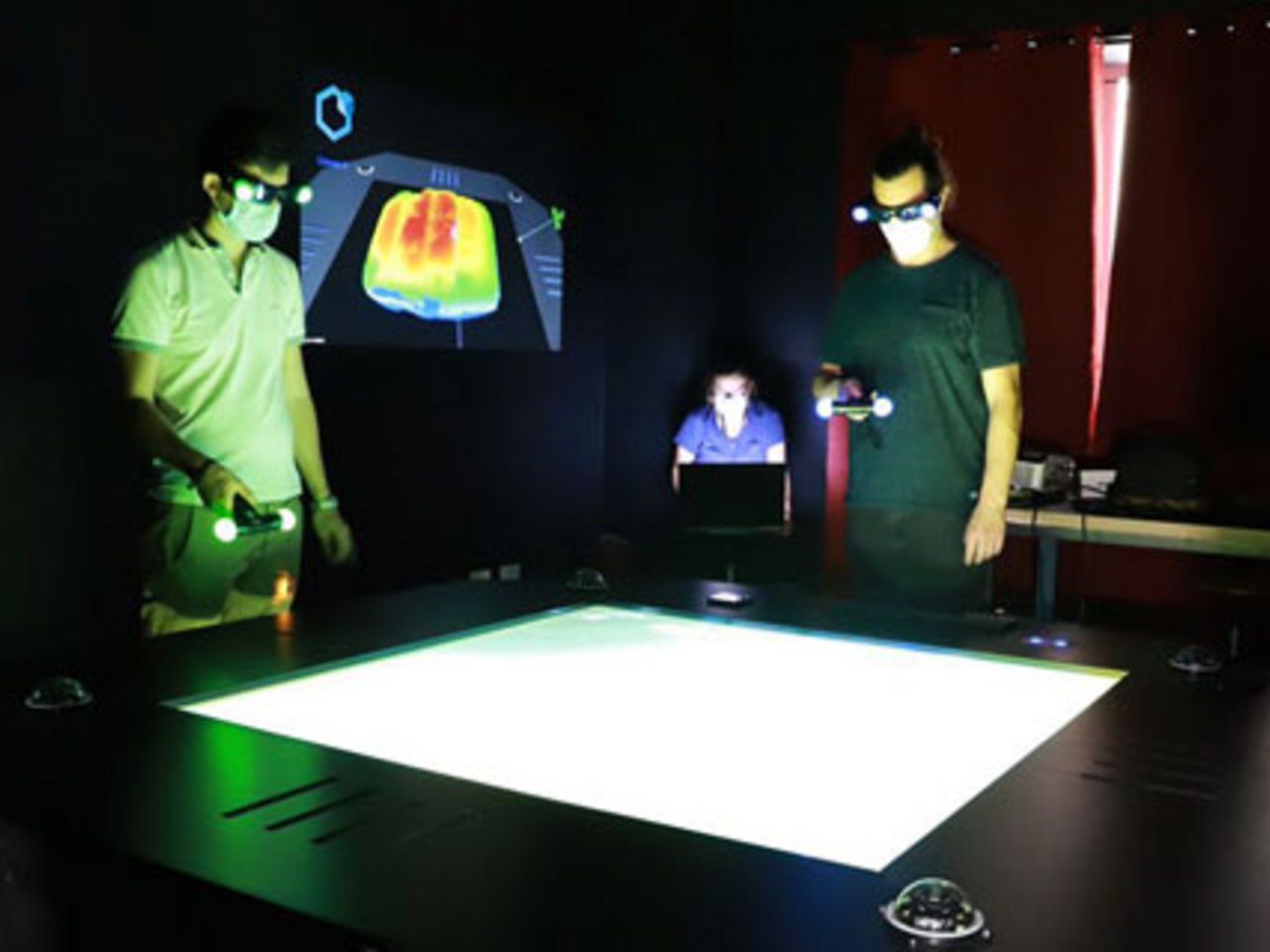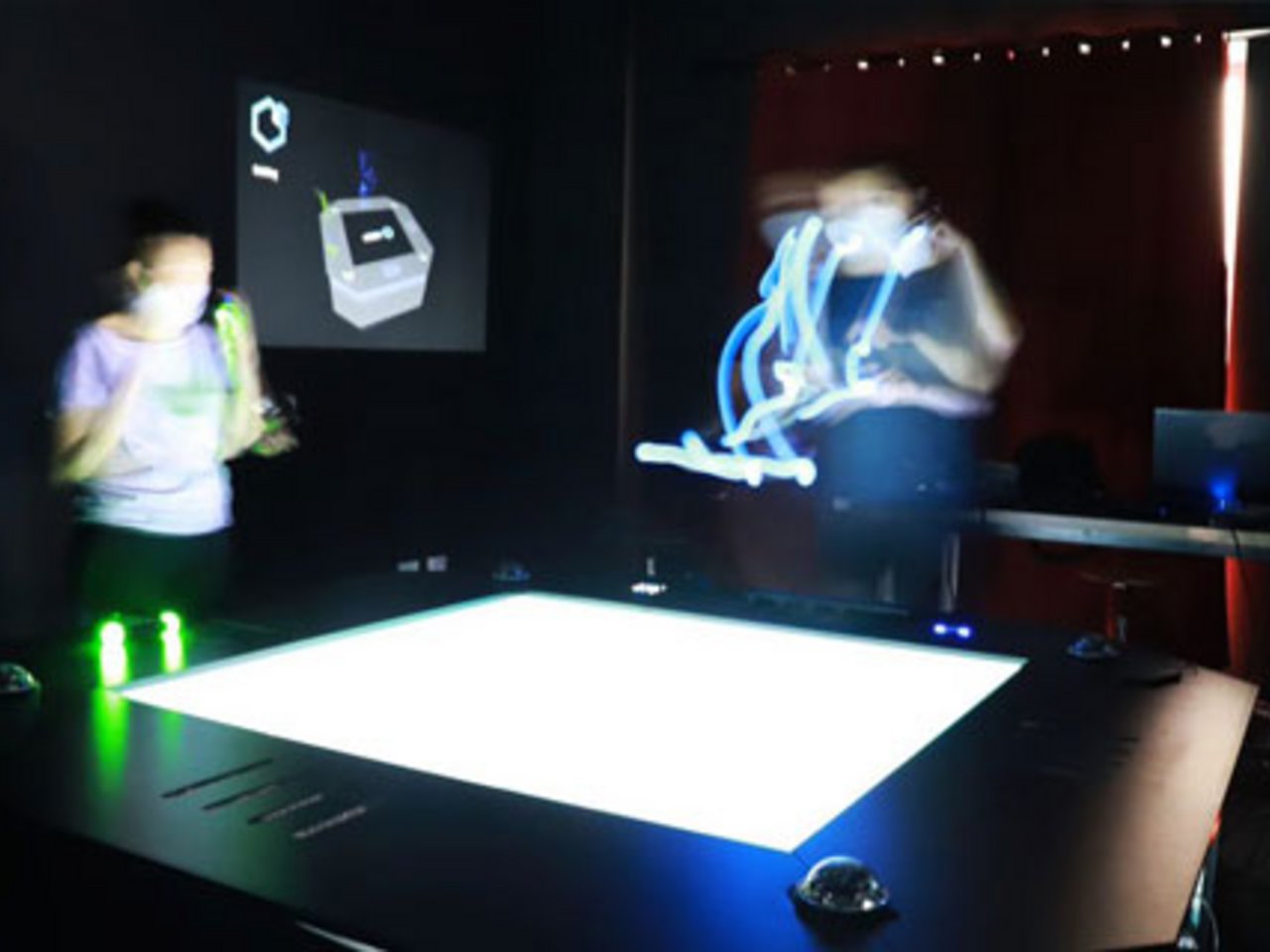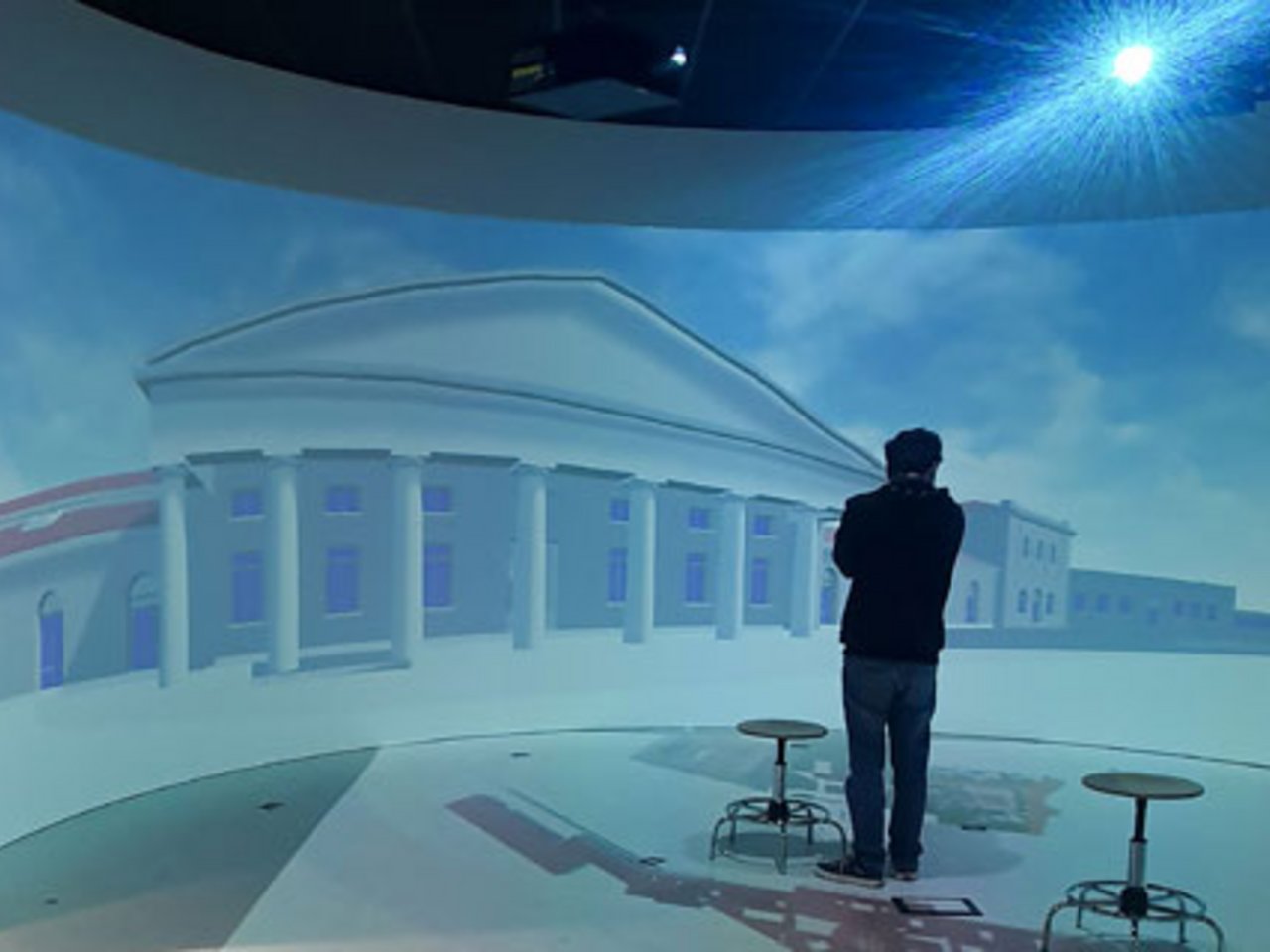Experimental Activities
Activities (virtual field): the experimental activities related to the virtual field concern the use of digital models on the two items of display equipment: the 360° Theatre and the Holographic Table. The immersive theatre mode supports the projection of both images and 360° videos; but also 3D models built in an Unreal environment that can be used directly or with the help of Unity packages. In the theatre, the simulations can make use of the equipment present, namely the bicycle and the walker synchronised to the movement of the virtualised environment. The prevalent experiments concern the response of subjects in an immersive environment, which involves the use of sensors connected in the ways made possible by current research. The table supports views of both point clouds and meshes, which can also be used in Unity packages without limits in terms of scale or size. It is therefore possible to simulate design insertion at any scale for verification, from urban to that of the design object, reproducing complex shapes in 3D on which it is possible to intervene directly.
Activities (physical field): the experimental activities related to the physical field use different types of 3D printers and enable the creation of prototypes with technical characteristics suitable for any project. LaborA has FDM printers, SLS stereolithographic resin printers, nylon and carbon fibre printers with possible glass fibre or Kevlar reinforcement, clay printers. Research into 3D printers mainly concerns the prototyping of complex objects or architectures generated by computational forms for which an adequate model for printing is required.
Equipment
Virtual theatre (diameter 7m): the theatre consists of a 360° ROUND with a diameter of 7 m with projection on a curved surface of 360° and on the floor. It is completed by proprietary software for the management of images and videos and their implementation.
Holographic table: the table consists of a metal structure with a polished glass top inside which 4 projectors are positioned; on the top, an advanced localisation system tracks the movements of the user equipped with specific glasses. The projection can take place for objects up to 70 cm above its surface and 100 cm below.
Laser scanner: in order to use the holographic table, the use of 3 different time-of-flight, variable intensity laser scanners is envisaged, usable for experiments on the theatre and table.
3D printers: FDM printing with Ultimaker S5 Pro Bundle, print volume 330x240x300 SLA printing with Formlabs Form 3, print volume 145x145x185 mm FDM CFR print with Markforged Mark Two, print volume 320x132x154 mm Clay print with Delta Wasp 40100, print volume diam. 400x h from 450 to 1000 mm




